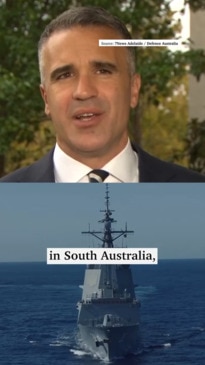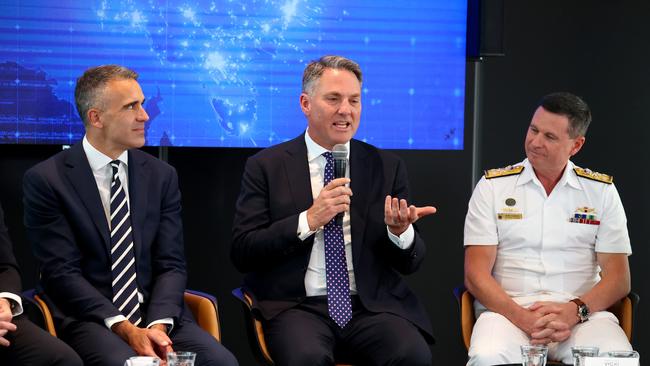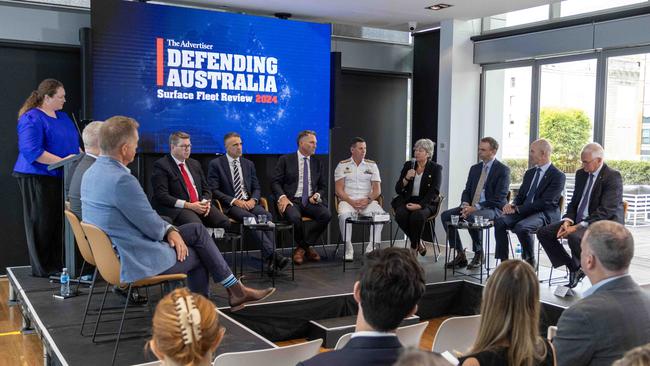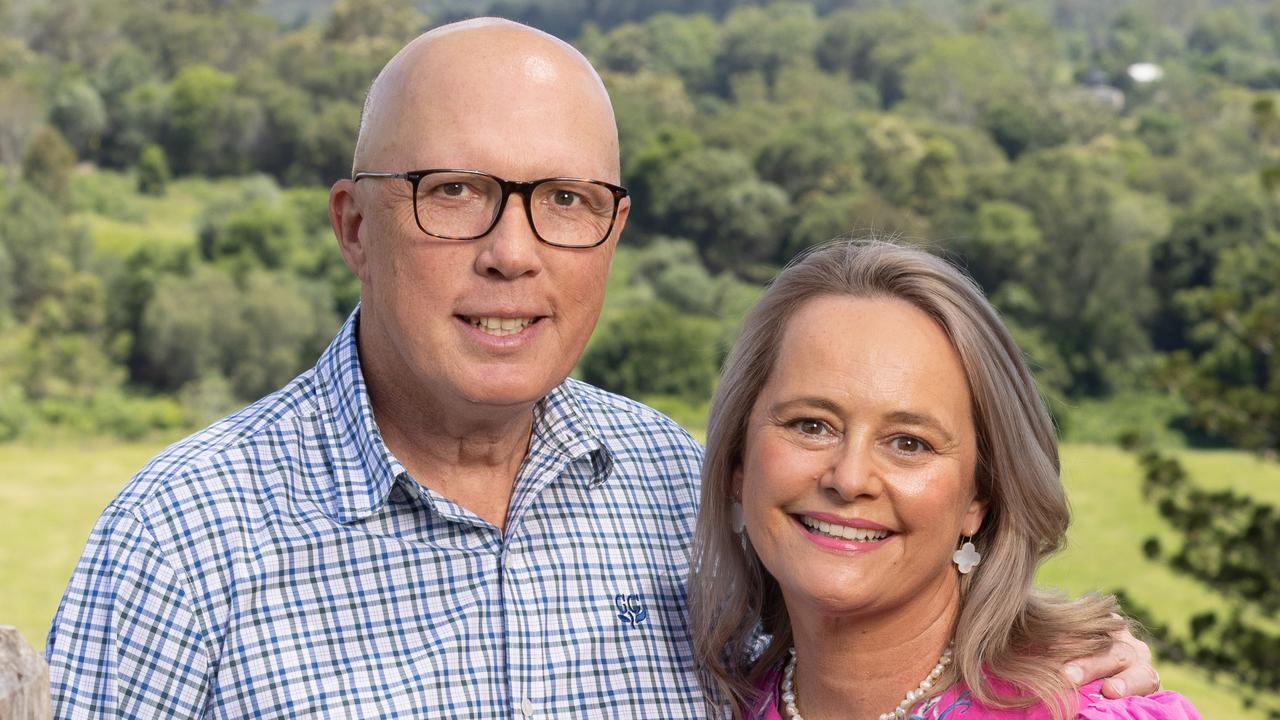Defending Australia live blog: What will changes to the frigate program mean for South Australia?
Struggling to understand the naval shipbuilding overhaul? You’re not alone, so The Advertiser assembled a top panel of defence experts to explain the deal in detail.

Australia must be “as capable as we can be” to maintain our way of life in a global setting of intense power competition, Defence Minister Richard Marles says.
Speaking at an Advertiser forum to discuss sweeping naval surface fleet changes unveiled on Tuesday, Mr Marles said Australia was facing a strategic challenge from China’s unprecedented military buildup and witnessing competition between great powers in our region.
“What we are trying to do is to make sure that we are as capable as we can be such that we are able to maintain our way of life no matter what the outcome of that contest is,” he told The Advertiser’s Defending Australia panel discussion hosted by editor Gemma Jones.

“We inherit what we get and we make the decision to build that future as quickly as we can, and I think we’re doing that.”
Welcoming the announcement, Premier Peter Malinauskas said he had argued the case for the Hunter class not just from the perspective of South Australia’s economic interests – but also the nation’s.
“Undoubtedly, the announcement dramatically increases the economic complexity of our state, it dramatically increases the depth of the opportunity before us,” he said.
“But it’s also true it is in the nation’s interests, and I think we do ourselves a disservice sometimes as state leaders when we only argue the parochial, state-based argument.”
BAE Systems Australia chief executive officer Ben Hudson told the panel the Hunter class was “the ultimate stealth ship”, and brings a valuable core capability mix.
“It is very hard to find,” he said.
“(The) Hunter (class) will bring our sailors back home alive where other ships may or may not.”
He said the Hunters’ highly-survivable hull is complemented by the best anti-submarine warfare combat system in the world.
“It is the most capable surface combat going into service anywhere in the world today, I can absolutely see why the government’s getting behind it,” he said.
Mr Hudson said Australia’s future navy would be “more powerful than any nation I can think of less than 30 million people”.

Defence Industry Minister Pat Conroy said the federal government would enter into a contract this year with BAE Systems to start construction on the frigates, beginning with a supply chain.
“We want BAE to be working with their supply chain really aggressively ... because we want the best possible price which means multi-ship orders,” he said.
Mr Conroy said there would be no work gap between the frigates and the Air Warfare Destroyer.
Flinders University Vice-Chancellor Colin Stirling said the scale of the skills gap was currently “somewhere between mammoth and gargantuan”, but Tuesday’s announcement would bring certainty to the sector.
“The fact that we now know that into the 2030s, 40s and beyond ... that there will be shipbuilding, very advanced manufacturing and shipbuilding here in South Australia makes it possible for educational institutions to plan, makes it possible for young people to aspire,” Mr Stirling said.

Asked about the readiness of the university sector to power up to train enough people in skills needed for the build, Mr Stirling said “the university sector is ready to go”.
“I think we’ve already started in many instances,” he added.
He said the sector has identified where shortfalls are and has been adding extra placements for enrolments.
Areas of priority that have been identified include engineering, project management, logistics and advanced manufacturing.
He said technical colleges, and the TAFE and VET sector, as well as universities needed to work closely with government and industry to ensure the right skills are being developed.
Nova Systems co-founder and deputy chair Jim Whalley, former SA chief entrepreneur, said he was concerned that the focus has been on workforce and skills instead of Australian organisations.
“Building skills is vitally important but building Australian organisations to bring those skills together to do things is as important in my view,” Mr Whalley said.
“And I think that’s one of the things that’s really missing.”
Mr Whalley said sovereign capability has been spoken about extensively over the past few years, but its definition was unclear.
“Sovereign capability, to me, is Australian owned, operated and controlled,” he said.
“That is the definition that most other nations use. The nations who are suppliers to us will look after their own interests first and foremost and unless we have the workforce and the organisations ... then we are going to be in real trouble and that’s the concern.”
Three of nine no longer built at Osborne
A next-generation air warfare destroyer will plug the continuous shipbuilding gap left by the decision to axe three of the nine Hunter class frigates.
Defence Minister Richard Marles revealed the replacement for the Hobart class air warfare destroyers will be built in Adelaide following a review of the navy’s surface fleet.
Three of the nine frigates will no longer be built at Osborne Naval Shipyard, as previously planned, because cost forecasts had soared from $45bn to almost $65bn – or about $7.2bn per ship.

However, continuous naval shipbuilding will be maintained at Osborne by following the six Hunter anti-submarine frigates with replacements for the three Hobart class air warfare destroyers.
In a special Defending Australia event hosted by The Advertiser, Mr Marles joined Premier Peter Malinauskas, Defence Industry Minister Pat Conroy, Chief of Navy Vice Admiral Mark Hammond, BAE Systems chief executive Ben Hudson, Babcock Australasia chief executive Andrew Cridland, KBR Government Solutions vice president Nic Maan, British High Commissioner to Australia Vicki Treadell, Nova Systems co-founder and deputy chair Jim Whalley and Flinders University Vice-Chancellor Colin Stirling for a panel discussion about the announcement.
If you missed it, you can re-read the key points from the informative session below.
More Coverage

Originally published as Defending Australia live blog: What will changes to the frigate program mean for South Australia?
Read related topics:AUKUS





